📎 Attachment Report
Find out which attachments attract how many views and downloads.
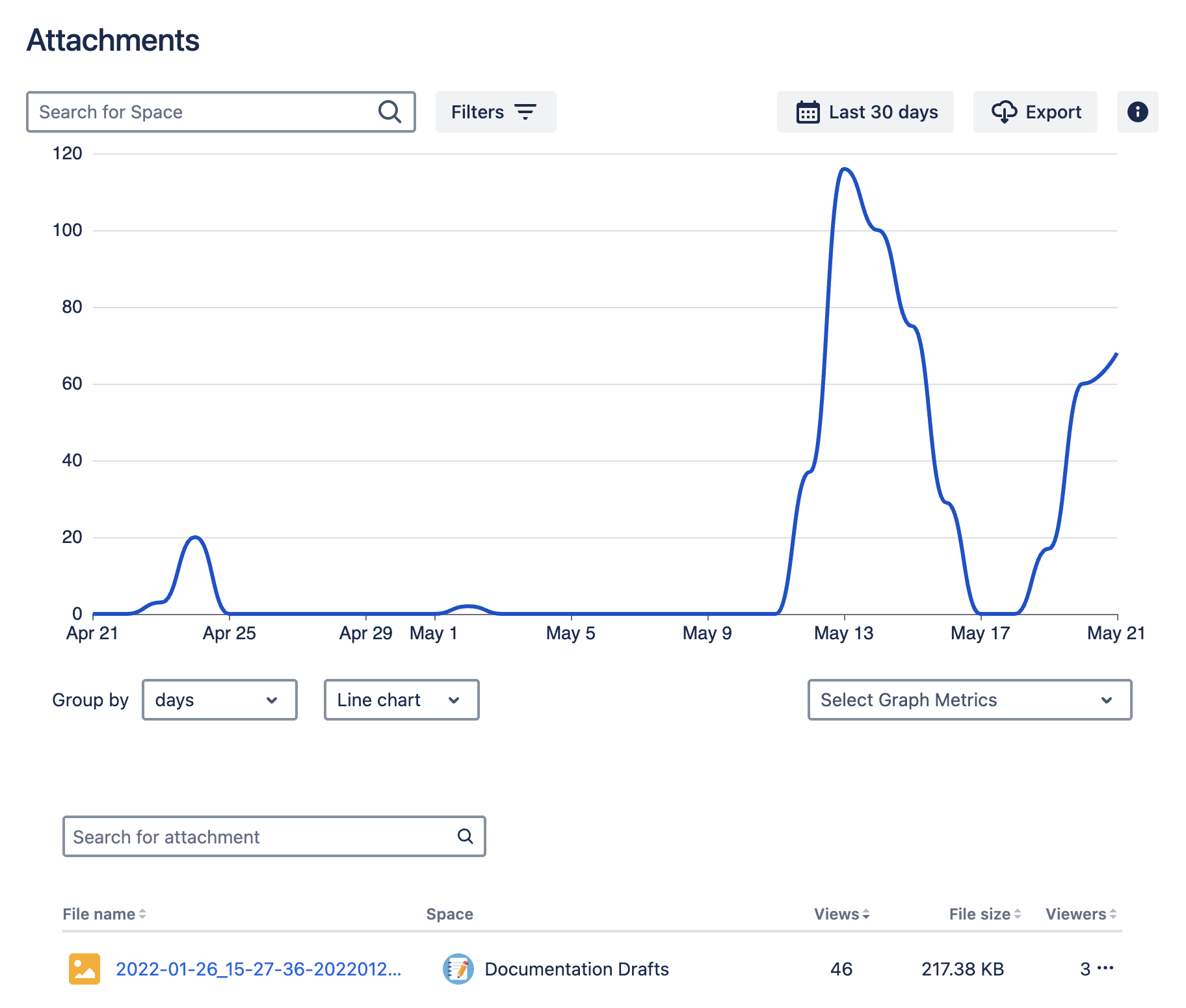
How to access the Attachment Report
To access Viewtrackers' Global Report, go to "Apps" in the Confluence header and select "Viewtracker - Global Report".

Switch from Overview (default) to “Attachments”.

The report will give you the following data:
A graph of the attachment views in the entire Confluence site. The default period is the last 30 days. Click on the date picker to change the time.
 It can take up to 1 minute before recent views are displayed in the report.
It can take up to 1 minute before recent views are displayed in the report.File Name: The most popular attachments' file names and file types.
Space: The space in which the attachments are located.
Views: The number of views or downloads of each attachment.
File Size: The attachment size (in bytes, MB or GB).
 By default, the report only contains the file size of files that have been edited, viewed or attached since the Viewtracker app is active in your system. By performing a content synchronization, an administrator can showcase attachments without any interactions.
By default, the report only contains the file size of files that have been edited, viewed or attached since the Viewtracker app is active in your system. By performing a content synchronization, an administrator can showcase attachments without any interactions.Viewers: The number of viewers who viewed or downloaded the attachment.
Settings and filters:
Use the search field to search for specific attachments.
Filter by status: Select “Current” or “Archived” attachments
All other options are explained below ⤵️
Changing the date range
By default, data from the last 30 days are displayed. You can change that by clicking into the date field and selecting a different date range. All metrics will adapt automatically.
You can group the metrics in the graph using “Group by” days (default), weeks, months, or years.
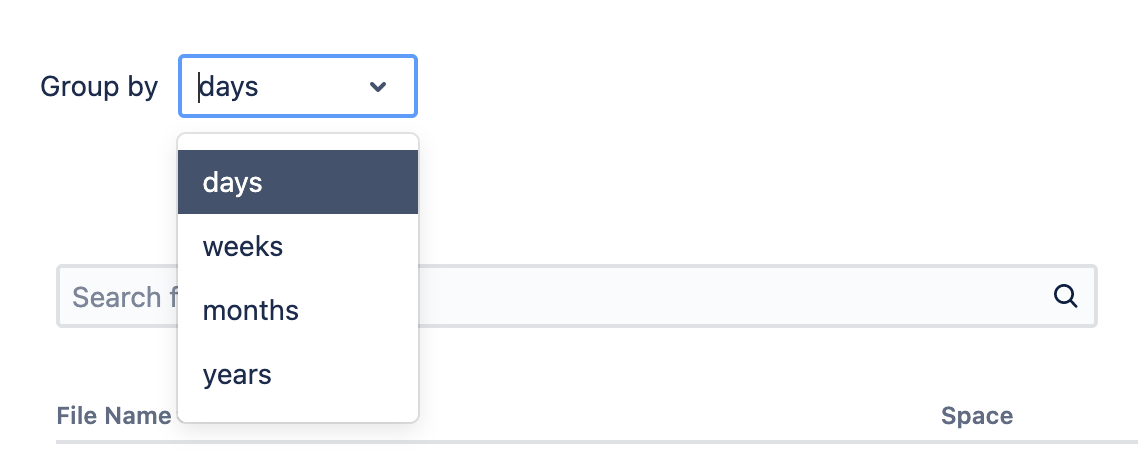
Choosing which metrics to display in the graph
Below the graph, there is a drop-down menu listing the available metrics. By default, “Views” are selected.
Select the metrics you want to appear in the graph, and the graph will adapt automatically. Viewtracker saves the metric selection; whenever you access the report in the future, the selected metrics will be displayed in the graph.
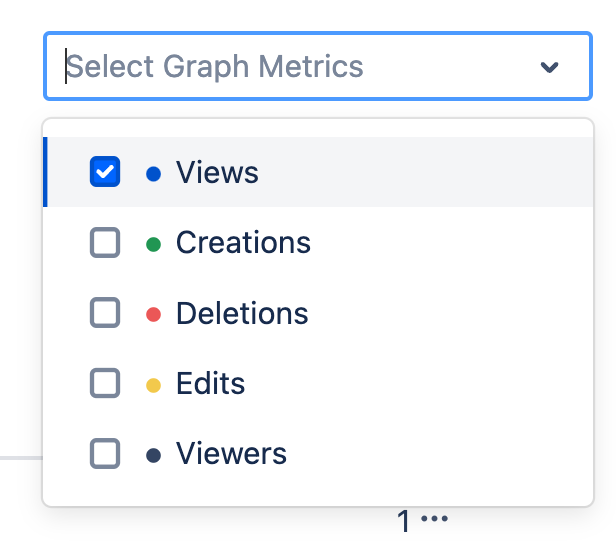
Saving and sharing reports
Once you’ve applied a filter or changed the report's date range, the report’s URL will adapt with parameters like ?dateValue=last.7.days&sortKey=views&sortOrder=DESC&searchText=view.
This is useful for the following reasons:
You can copy and share the URL with co-workers with the same access permission.
You can save the URL to access a customized report quickly.
Include or exclude file types
If you want to include or exclude file types, refer to the Manage Tracking Documentation site.
Available file types for tracking
Word
Document
Template
Document with Macro
Template with Macro
Excel
Sheets
CSV
Sheets with Macro
Template with Macro
Add-in with Macro
Binary sheet with macro
Spreadsheet
Spreadsheet with template
Powerpoint
Presentation
Slideshow
Template
Add-in with macro enabled
Presentation with macro
Template with macro
Slideshow with Macro
Images
GIF
PNG
TIF
TIFF
JPEG
BMP
SVG
WEBP
x-icon
Video
MPEG
MSvideo
Webm
MP4
Quicktime video
WMV
Project
Ms proj
MSproject
x-msproject
x-dos MS project
Archive
ZIP
GZIP
7ZIP
TAR
RAR
Audio
MP3
WAV
AAC
AIFF
DSD
ALAC
OGG
Other formats:
PDF
Gliffy
Text documents (Cloud only)
Extensions:
TXT
RTF
Differences between file type tracking on Viewtracker on-premise and Cloud:
Data Center/Server: specific MIME types are tracked
Cloud: specific extensions are tracked
Export Attachment data
You can export the numbers of the Attachments Report as a CSV file in the Global and Space Report.
All numbers in the export refer to the selected filter and date range (last 30 days by default).
Here’s how to export:
1. Go to Apps → Viewtracker - Global Report → Menu “Attachments” → Export → choose individual or aggregated views
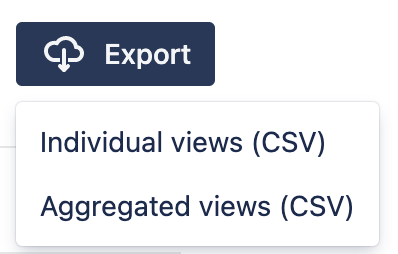
2. Confirm the amount of data.
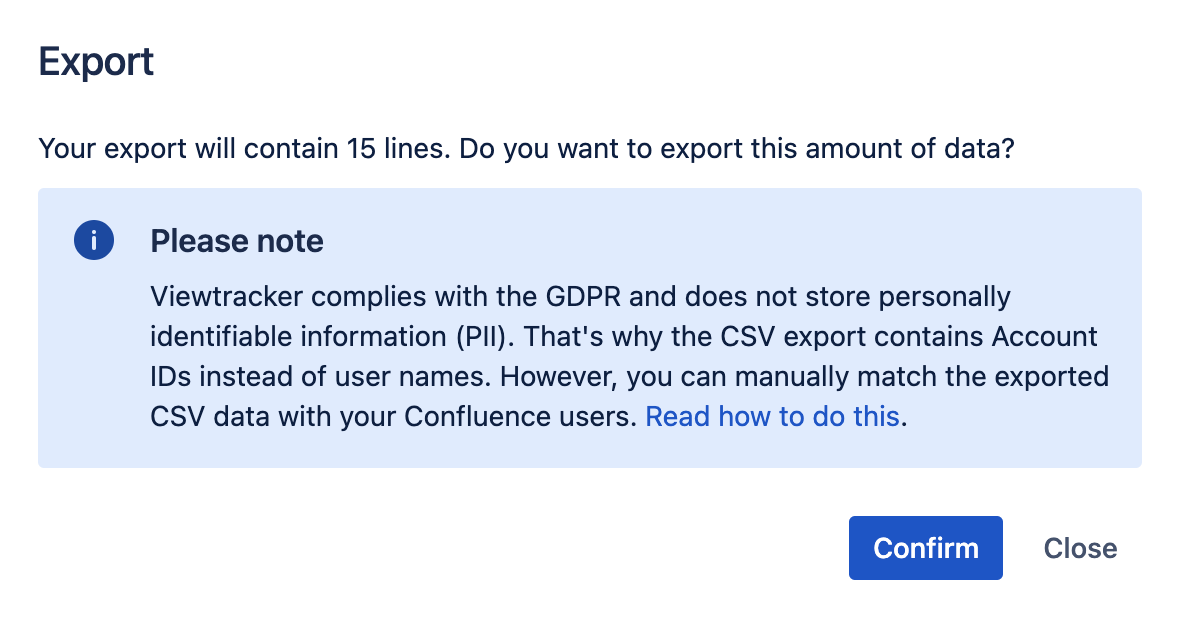
Individual views:
This exported CSV file will include every single attachment view with the following information:
Account Id, Attachment Id, Content Title, Content Type, Space Key, Date, Unix Date.
Aggregated views:
This exported CSV will include the aggregated view events as displayed in the Attachment Report and will include the following information:
Attachment Name
Space Name
Views
File Size (in byte)
Viewers
If you need the user name instead of the Account ID, please consult our FAQ: How to find the user name in the exported data?
Related content
Viewtracker has two more powerful reports that showcase attachment storage, growth and storage:
📶 Instance Report for Confluence administrators
Space Status Report for space administrators
